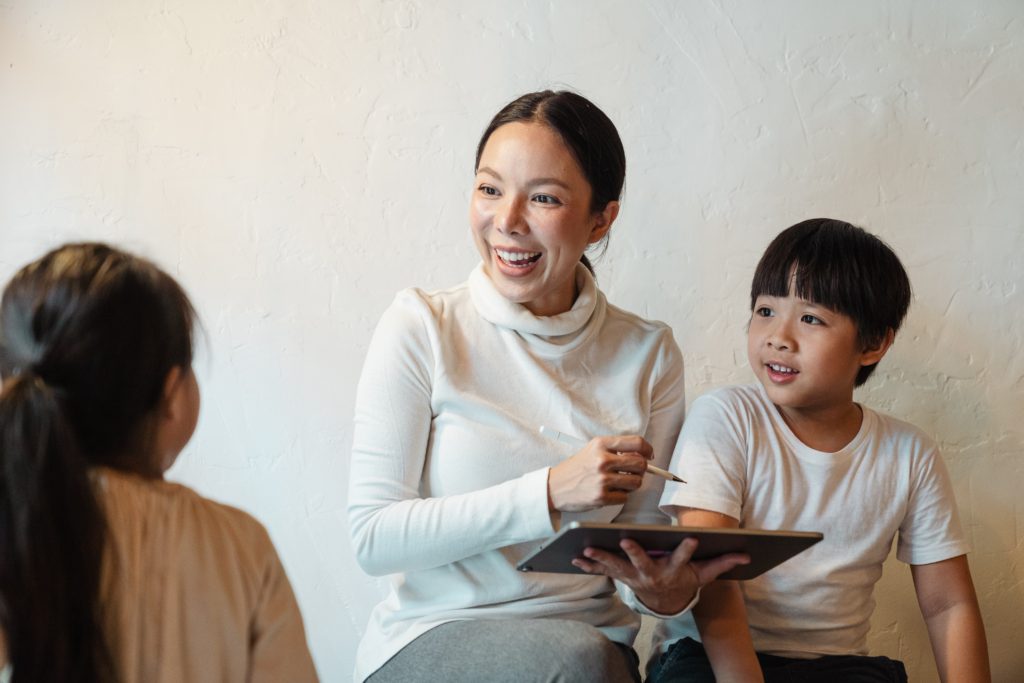In this article, we’ll look at everything related to how to learn Spanish for kids: when to start, what methods to use, how to help your kids learn more effectively, and much more.
Spanish can truly be called a world language: it is spoken by over 530 million people worldwide, both natively and as a foreign language, and its popularity continues to grow. More and more parents, especially those in the United States, are opting to teach their children Spanish as a second language.
When Should I Start Teaching My Child Spanish?
People often say that children learn foreign languages more easily than adults, which may be overstated to an extent. Both kids and adults have distinct strengths when it comes to learning a language.
Children normally pick up their native language relatively quickly, starting by understanding tone and rhythm and mimicking sounds to receive feedback.
They are able to playfully learn a second language in the same manner, but remember to be patient and supportive because language in general is a newer endeavor for them.
There is no universal consensus on what age is the best to start learning Spanish or another foreign language. Some researchers agree that it may be beneficial to start before the age of 14-15.
For reference, here are some of the different expert opinions on when kids should start learning Spanish:
- Some researchers say that second language acquisition skills peak at or before the age of 6 or 7. For instance, according to the National Curriculum in the UK, children should start learning a second language from the age of 6 or 7.
- Others believe that the best way to start is at the age of 3-4 years old: children’s brains build networks for speech processing until the age of four, and after that age languages need to be learned rather than acquired.
- Some opt for ‘the earlier the better approach’. Children in bilingual families are immersed in at least two languages since birth, and they can start speaking both as early as the age of two.
- There are also studies that suggest that 11-13-year-olds learn better than younger children in the classroom and perform better at second language proficiency tests.
So, what is the best age to learn Spanish for kids? Unfortunately, there is no unified answer. There is a general consensus that starting young is beneficial for learning a foreign language, but it is up to you as a parent to decide when starting is best for your child, depending on your circumstances.
If you’re in doubt, then err on the side of starting as early as possible, because it gives more time for immersion, feedback, and growth.
Methods to Teach Kids Spanish and How They Might Change Over Time

Methods of teaching Spanish to children differ depending on their age and must change over time as the children grow.
When teaching very young children who are kindergarten age or younger, there are challenges in attempting to use methods with too much structure. Can you imagine sitting down with a 4-year-old and trying to explain grammar to them? It probably won’t go well.
Young kids have shorter attention spans and are easily distracted. They also have no conceptual grasp of such abstract ideas as grammar, even if they speak properly in their primary language most of the time.
At this age, one of kids’ main activities is play, and teaching them Spanish could adapt this approach by incorporating the following: singing songs and nursery rhymes, playing interactive games, coloring, watching cartoons, and using your surroundings for environmental immersion.
Teaching School-Aged Children Spanish
As children get older, at 5-7 years old, you can begin to introduce more structured language learning activities such as flashcards, pronunciation drills and writing practice. There should still be a lot of play involved, with learning being accomplished through fun activities that engage the child’s imagination.
Between the ages of 7-11, children can handle some age-appropriate instruction, but there should also still be some learning done through a form of play. For example, imagination games like role-playing can be very effective at this age, so long as the topics are close to relevant to kids interests and everyday lives.
As children approach teenage years, the necessity of leaning in to their interests is likely to grow in order to keep engagement levels high. The beauty is that at this level, it’s likely they are self-motivated and possibly integrating the second language into their lives independently if they’ve been at it for a while.
How Long Does it Take to Teach Kids Spanish?
This is a tough question to answer for many reasons.
First, it’s impossible to finish learning a language in the same way you can finish reading a book; skills are developed on a spectrum with near endless depth to mastery.
Even if your child achieves conversational fluency in Spanish, they will still need regular practice to maintain their level.
Second, learning Spanish successfully depends on many factors: the age they start, other languages they speak, their individual characteristics and cognitive abilities, the learning environment, the teacher, the child’s interest in the language or lack thereof, and many more.
Spanish is considered to be a relatively easy language for native English speakers to master. Both are Indo-European languages with a lot of shared history, which means that there is a lot of shared vocabulary and some grammatical similarity.
For adults, estimates suggests that it takes about 24-30 weeks, or 600-750 class hours, to reach a proficiency level equal to B2/C1 on the scale suggested by the Common European Framework of Reference for Languages. This is, however, a rough generalization based on deliberate practice hours, and individual experiences can differ from it a lot.
Instead of pushing your child to reach some arbitrary deadline, think of integrating a second language as a lifestyle journey that is lifelong. Focus on building habits that make language learning successful. Here are a few of the key ones:
- Regular, preferably daily practice
- Focus on topics and materials related to interests and needs
- Creating a supportive family environment
- Incorporating high quality resources
- Lots of audiovisual immersion time
- Live through the language
Coaching your child to a high level of Spanish proficiency may take quite a while no matter how old the learner is. However, regular practice, a bit of effort, and some patience will no doubt lead to language mastery sooner or later.
What role can parents play?

First and foremost, no matter whether you can or cannot speak the language, you can help your child learn Spanish by supporting them. Encourage them to learn, be happy for their successes, listen to their stories or complaints – family support has a tremendously positive influence on motivation, and motivation is one of the keys to successful language mastery.
It may be a bit harder to help your child learn if you cannot speak Spanish yourself, but there are still quite a few things you can do.
If you cannot speak Spanish:
- Keep in touch with the Spanish teacher to understand your kid’s progress and needs
- Communicate the value of learning Spanish to your child
- Help your child be organized – set aside time and place for homework, keep track of the assignments, and get ready for their instruction
- Start learning Spanish yourself
- Find and attend Spanish culture events together
If you can speak Spanish:
- Read good books together or read to them in Spanish
- Watch movies and cartoons in Spanish
- Help your child with homework by offering tips and asking guiding questions
- Speak some Spanish at home, anchored around daily rituals or even more broadly
If you take some time to think about it, you will no doubt come up with more ideas of your own. The important thing is to be encouraging and supporting and to find ways for your child to practice Spanish in addition to their classes.
Some free tools & resources
Nowadays, with the help of the Internet, you can get access to a lot of great resources. Here are some of the great free resources to learn Spanish for kids.
- YouTube channels for learning Spanish. YouTube is a treasure trove of information and learning if you know where to dig. There are several great Spanish learning channels for children that feature cute cartoons and fun lessons. Here are a few examples:
- Free Spanish Games. Playing games is how children – especially younger kids – learn, including learning foreign languages. Playing a few simple and fun games online can be a great way to expand their vocabulary and have some Spanish practice outside the classroom. But make sure to watch your children’s screen time!
- Spanish Books for Kids. Reading is a great activity to learn Spanish for kids: a good book is fun and exciting, and it is also a great way to practice the language.
- Other Spanish Resources. Here are a few other free Spanish-learning resources for kids.
Want more? Here is a large collection of resources to learn Spanish for kids: https://takelessons.com/blog/Spanish-worksheets-resources-z03
